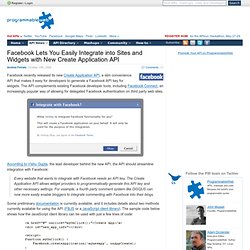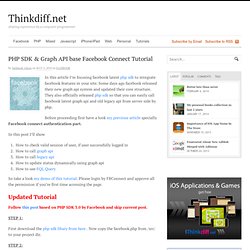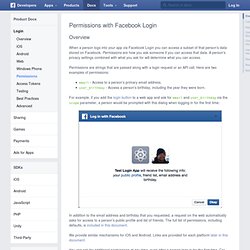

[INV]An error occurred with <appname>. Please try again later. Cross-Domain Communication with IFrames. An update in the era of HTML5 (May 6, 2011) This post has been heavily commented and linked to over the years, and continues to receive a ton of traffic, so I should make it clear that much of this is no longer relevant for modern browsers.

On the one hand, they have adjusted and tightened up their security policies, making some of the techniques here no longer relevant. On the other hand, they have introduced technologies that make it easier to do cross-domain communication in the first place. With modern browsers, you can and should be using postMessage for this purpose.
Library support is now available too. Now back to the original post … (from March 31, 2008) This article explains iframe-to-iframe communication, when the iframes come from different domains. Background: Cross-Domain Communication Ironic that in this world of mashups and Ajax, it’s not very easy to do both of them together. Related to this article is a demo application and a couple of variants. The Demo Demo Ta-da!!! Platform .:. Bug 11543 – Facebook.createApplication page blank and value undefined. Platform .:. Bug 8260 – Admin.setAppProperties will not set child Applications Settings. FB.Connect.createApplication and API Secret... Facebook Really Wants You to Integrate it Into Your Site.
Platform Developer Forum / Help with Create Application API. Facebook Lets You Easily Integrate into Sites and Widgets with New Create Application API. Facebook recently released its new Create Application API, a slim convenience API that makes it easy for developers to generate a Facebook API key for widgets.

The API complements existing Facebook developer tools, including Facebook Connect, an increasingly popular way of allowing for delegated Facebook authentication on third party web sites. According to Vishu Gupta, the lead developer behind the new API, the API should streamline integration with Facebook: Maps of Your Friends Around the World. PHP SDK & Graph API base Facebook Connect Tutorial. In this article I’m focusing facebook latest php sdk to integrate facebook features in your site.

Some days ago facebook released their new graph api system and updated their core structure. They also officially released php sdk so that you can easily call facebook latest graph api and old legacy api from server side by php. Before proceeding first have a look my previous article specially Facebook connect authentication part. In this post I’ll show How to check valid session of user, if user successfully logged inHow to call graph api How to call legacy apiHow to update status dynamically using graph apiHow to use FQL Query So take a look my demo of this tutorial.
Follow this post based on PHP SDK 3.0 by Facebook and skip current post. First download the php sdk libary from here . Create a file named fbmain.php. First update $fbconfig array by your application’s id, api key and secret key. Apps on Facebook.com. To drive more traffic to apps on Facebook, we enable various channels that enable new users to discover your app as well as existing users to re-engage with your app.

Each channel is designed to help engage users and our algorithms help surface the best content for each user. The current channels include: Newsfeed stories The News Feed is shown immediately to users upon logging into Facebook, making it core to the Facebook experience. Discovery stories Facebook shares stories with friends when a user starts using a new app or first installs a new game. In addition, Facebook also generates aggregated ‘playing’ stories by default.
Developers of app associated with more personal behavior such as dating, weight management or pregnancy, can turn these stories off by disabling the social discovery field in the App Dashboard in the ‘Advanced’ tab under the ‘Settings’ section. Publishing stories In addition you can publish content to the stream using the Feed Dialog. User control Timeline Search Page.
Authentification - Développeurs Facebook. Extended Permissions - Développeurs Facebook. As a general rule, the more permissions an app requests, the less likely it is that people will use Facebook to log into your app.

In fact, our research shows that apps that ask for more than four permissions experience a significant drop off in the number of completed logins. Additionally publishing permissions (publish_actions) will prompt a second step in the Login dialog, which can cause fewer people to log in: Here are a few guidelines to use when asking for permissions, both during and after login: Only ask for the permissions that are essential to an app.Ask for permission in the context in which they are required. For example, if your app wants to show places of interest near a person's home, asking for user_location just prior to displaying that information would give the person a greater understanding of why the permission is being requested.Use any available public profile information before asking for a permission.
For Websites. As mentioned, the code above uses the common defaults for the options available when initializing the SDK.

You can customize some of these options, if useful. Changing SDK Language In the basic setup snippet, the en_US version of the SDK is initialized, which means that all the dialogs and UI will be in US English. Open Graph protocol.